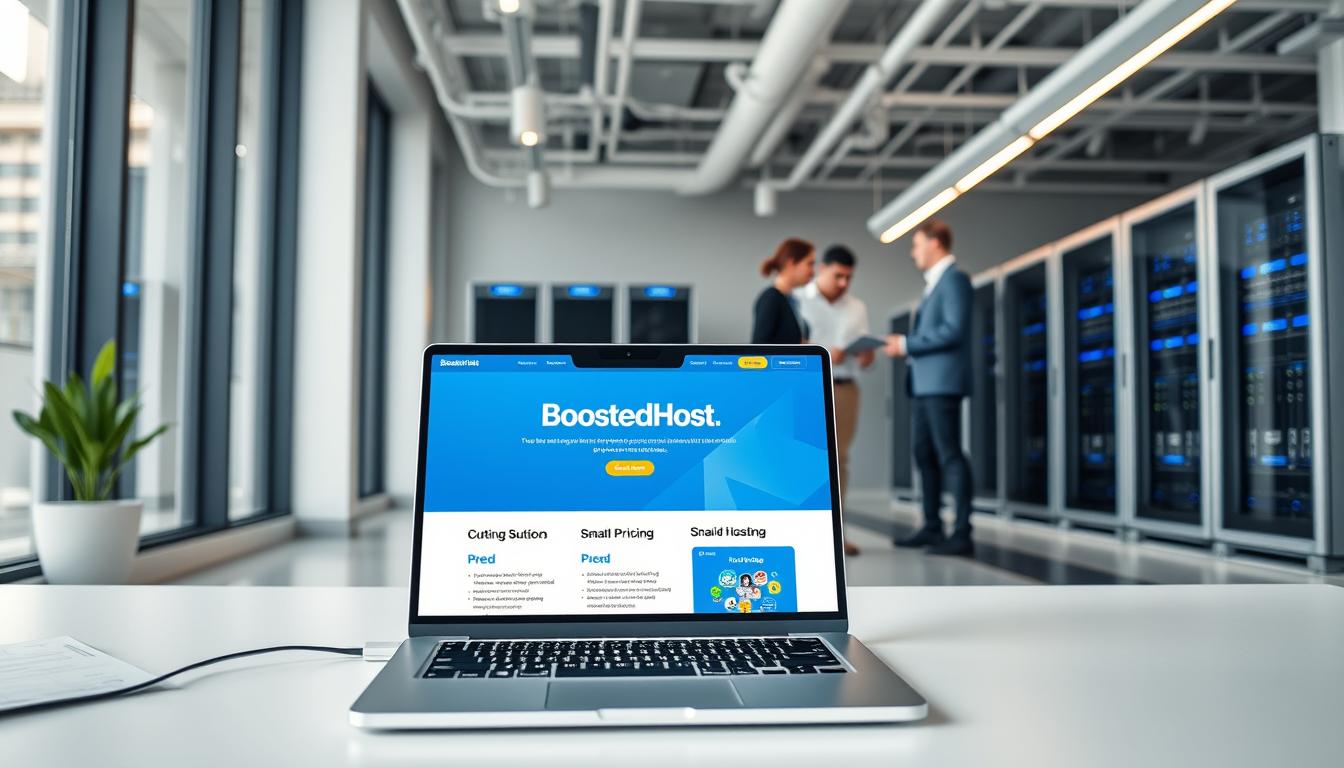We know how heavy this choice feels. Choosing a hosting path can make or break a small business. We’ve seen founders lose momentum chasing complexity. We built this review to cut through the noise.
Here we introduce a premium Swiss-based hosting provider known for ultra-fast LiteSpeed servers, free SSL, daily backups, malware protection, and a global CDN. That setup delivers ~99.99% uptime and sub-200ms global TTFB for fast page loads.
We’ll also map what amazon web services brings: near-100% uptime goals, broad cloud products, and pay-as-you-go pricing with Lightsail bundles for predictable plans. Expect ~380ms response in basic WordPress tests and deep flexibility for complex stacks.
Our aim is simple — help you pick the right platform by comparing speed, uptime, pricing, features, and support. We test real outcomes: faster pages, clearer pricing, and support that actually fixes problems.
Key Takeaways
- We compare managed performance and bundled security against broad cloud scale.
- Speed and TTFB matter — they drive conversions and user trust.
- Pricing transparency wins for predictable ROI; AWS offers deep discounts but complex billing.
- Orbit AI builder shows how quickly a professional website can launch.
- Support responsiveness and Swiss reliability are core differentiators for small teams.
At a Glance: Who Each Platform Is Best For in 2025
Today we map who benefits most from a managed, all-in-one hosting plan and who needs a full cloud computing catalog.

Small businesses, agencies, and creators: fast managed hosting with inclusive features
We recommend a managed platform when you want low lift and fast results. It bundles performance tuning, free SSL, daily backups, malware protection, and a global CDN.
Why this matters: non-technical users launch quickly. Agencies managing many sites cut add-on costs. Orbit AI speeds time-to-value for marketing and commerce sites.
Developers and enterprises: vast cloud computing ecosystem for complex needs
Teams that need granular control will prefer a large cloud catalog. EC2, RDS, S3, CloudFront, Lambda, and similar tools enable custom pipelines and regional controls.
Why this matters: enterprises get options for compliance, scale, and specialized workflows. That power requires cloud fluency and architecture work.
- Choose the platform that matches your current stage and skills.
- Run marketing sites where speed and conversion matter; move heavy data workloads to cloud platforms if needed.
| Audience | Strength | Ideal Outcome | Example Tools |
|---|---|---|---|
| Individuals / Creators | Managed performance, easy setup | Fast launch, low overhead | Orbit AI, managed WordPress |
| Small businesses & Agencies | Inclusive security, predictable pricing | Reliable sites, lower ops cost | Free SSL, global CDN, daily backups |
| Developers / Enterprises | Broad platform options, regional control | Custom architectures, compliance | EC2, S3, RDS, Lambda |
How We Compared Speed, Uptime, Pricing, and Support
We ran identical site builds side-by-side to measure real-world speed and reliability. Each test used the same page weight, caching rules, and traffic patterns so results reflect true performance for a website owner.
We measured response time and throughput during peak windows. Our LiteSpeed stack reached sub-200ms global TTFB. In contrast, a basic WordPress install on the larger cloud showed ~380ms in our baseline runs.
Uptime and regional variance mattered. We tracked availability across multiple data centers and compared independent monitors to confirm the promised 99.99% averages.
We tallied total cost of ownership — SSL, daily backups, malware protection, CDN — and compared inclusive plans to an à la carte cloud approach. We also timed support first-response and resolution in minutes.
“Support is only as good as the fix you get the first time.”
- Equal test scenarios for fair response time comparison.
- Uptime checks across data centers and regions.
- Cost analysis including must-have features and tools.
- Support audits: first response, escalation, resolution time.

| Test Area | What We Measured | Key Finding | Implication |
|---|---|---|---|
| Speed | TTFB, throughput | LiteSpeed ~sub-200ms; cloud baseline ~380ms | Faster pages drive conversions |
| Uptime | Availability across data centers | ~99.99% observed | Reliable presence for customers |
| Cost & Support | Add-ons, response time | Inclusive plans reduce ops; tiered cloud support varies | Predictable billing vs. metered pricing |
We run this as a repeatable review so teams can judge trade-offs. Our vs. aws perspective follows the same processes for a fair outcome.
Performance Showdown: LiteSpeed + Global CDN vs AWS Compute
When speed is the goal, server choices and CDN placement decide the outcome.
Our optimized LiteSpeed stack delivers sub-200ms global TTFB and tuned runtimes for PHP, Node.js, and Python. That reduces server CPU per request and speeds dynamic pages like product listings and checkout flows.
We pair that stack with a built-in global CDN to offload assets at the edge. The result: faster first paint and improved interaction metrics for international visitors.
- LiteSpeed accelerates dynamic requests — fewer slow carts, fewer abandoned checkouts.
- Pre-optimized runtimes cut configuration work so your target response time is realistic out of the box.
- Managed WordPress and WooCommerce hosting keep page loads stable during traffic spikes.
- AWS offerings like EC2, amazon lightsail, and CloudFront can match top-tier performance but require careful tuning — instance types, caches, and DB settings matter.
| Metric | Optimized LiteSpeed Stack | Typical AWS Baseline |
|---|---|---|
| Global TTFB | ~sub-200ms | ~380ms |
| Setup effort | Low — pre-tuned runtimes | High — manual tuning required |
| Best for | Managed sites, stores, fast launches | Custom architectures, large cloud projects |
Bottom line: the platform choice depends on how much time your team will spend tuning. For a fast website and predictable response time, the LiteSpeed + CDN path is efficient. amazon aws can reach similar speed but often costs more time and expertise to get there.
Reliability and Uptime: Consistency at Scale
Keeping a website online is a business metric, not just a technical goal. We design reliability so you get predictable performance and fewer surprises.
Our promise: an average 99.99% uptime, automated daily backups, and proactive malware protection included by default. These safeguards reduce recovery time and protect data against accidents or attacks.
Redundant infrastructure and global reach
We run multiple data centers across Switzerland, USA, Europe, and Asia to keep latency low and failovers fast. That geography helps during traffic spikes and localized incidents.
AWS: regional redundancy and design goals
amazon web services targets near-100% availability with multi-region patterns. Using Route 53, multi-AZ databases, and edge delivery, teams can architect exceptional uptime — at the cost of extra setup and coordination.
“More time online means more leads, sales, and fewer fires to put out.”
- Redundant infrastructure and secure configs that protect uptime.
- Automated daily backups to guard against data loss.
- Built-in malware protection to cut remediation time and keep your site available.
| Feature | Included | Remarks |
|---|---|---|
| Uptime SLA | 99.99% average | Measured across global data centers |
| Backups | Daily automated | Quick restores for site recovery |
| Malware protection | Proactive scanning | Reduces downtime from incidents |
| Regional redundancy | Global data centers | Low-latency failover |
We include these protections so your hosting choice saves you time. For teams that prefer to assemble architecture, managed hosting plans show the practical difference at a glance.
BoostedHost vs Amazon Web Services
Clear pricing and built-in essentials cut overhead for founders and agencies.
We compare transparent monthly pricing to the pay-as-you-go complexity of large cloud providers. Our plans include free SSL, daily backups, malware protection, and a global CDN. That bundle removes multiple line items from your monthly bill.
Pricing transparency vs pay-as-you-go complexity
Predictable billing simplifies budgets. You get one monthly invoice and no surprise transfer fees.
By contrast, amazon aws uses usage meters. Lightsail offers bundles, and reserved capacity can cut EC2 price up to 75% — but only with planning and commitment.
Included features that cut add-on costs
Essentials like SSL, backups, malware scans, and a CDN are built in. That lowers the total cost and administrative load for small teams.
Total cost of ownership for individuals and small businesses
We factor setup time, tooling, and the opportunity cost of managing complex infrastructure. For many small businesses, predictable monthly pricing delivers better value and less operational overhead.
- Clear billing reduces accounting friction and surprise charges.
- Built-in security and backups cut third-party vendor costs.
- Elastic cloud value appears when you can optimize reserved capacity and manage many variables.
| Aspect | Predictable Hosting | Cloud (pay-as-you-go) | Implication |
|---|---|---|---|
| Monthly pricing | Fixed, clear | Variable by usage | Easier budgeting vs fluctuating bills |
| Included essentials | SSL, backups, CDN, malware protection | Separate add-ons (CloudFront, WAF, backups) | Lower ops for individuals and agencies |
| Total cost of ownership | Predictable TCO | Potentially lower unit cost at scale | Choose predictability or deep optimization |
“If you want fewer moving parts and a clean monthly bill, predictable hosting wins. If you need deep customization and cost engineering, cloud can pay off.”
Pricing & Plans: Transparent Hosting vs Usage-Based Cloud
Pricing decisions shape your runway — pick a plan that matches cash flow and team skills. We present clear options so you know what your plan comes with and what it costs as you grow.
No hidden fees. Our plans bundle core protections — free SSL, daily backups, malware scanning, and a global CDN. That predictable monthly price helps small businesses and agencies protect margins.
No surprises for individuals, small businesses, and agencies
Each plan lists CPU, RAM, storage, and bandwidth. You see exactly what the plan comes with. That clarity reduces billing questions and saves time on accounting.
AWS and amazon lightsail: fixed bundles and variable billing
aws offers a Free Tier for the first year and Lightsail bundles with set monthly rates. Reserved EC2 capacity can cut cost up to 75% — but overall billing stays variable across services and data transfer.
When predictable monthly hosting beats metered cloud
For steady-traffic sites and stores, predictable pricing reduces risk. Metered cloud pays off when you can optimize instances and accept billing variability.
- Launch: choose a clear monthly plan and avoid surprise fees.
- Growth: scale plans simply—resources and security remain included.
- Scale: evaluate reserved capacity and cloud cost engineering.
| Stage | Best Fit | Why |
|---|---|---|
| Launch | Predictable hosting | Simple pricing, built-in security |
| Growth | Monthly plans with clear resources | Budget stability for marketing and ops |
| Scale | Cloud with reserved capacity | Lower unit cost if you manage complexity |
Features That Matter: What You Get Out of the Box
Included features shape the day-one experience for every customer and decide how quickly you ship.
Inclusions that remove friction
We deliver a clear stack so teams spend less time on ops. Out of the box you get free SSL, daily backups, malware protection, and a global CDN.
Staging tools and a control panel are ready on day one. The platform supports PHP, Node.js, and Python. That means apps and sites run without extra installs.
Commerce and builder readiness
Our WooCommerce-ready stacks include LiteSpeed cache rules and optimized resource profiles. Carts stay fast during campaigns.
Orbit, our website builder, helps teams publish pages and funnels in minutes. It removes dependencies on multiple tools and speeds go-to-market.
Cloud breadth — power with assembly
The larger cloud catalog offers S3 for storage, RDS for managed databases, CloudFront CDN, Lambda for serverless, and Elastic Beanstalk for PaaS.
Those components give power, but they require orchestration, dashboards, and integration work.
“Inclusive features mean fewer vendors, fewer invoices, and less risk for your team.”
| Included | Benefit | Notes |
|---|---|---|
| Free SSL | Secure pages by default | No extra setup |
| Daily backups | Fast restores | Reduced recovery time |
| Global CDN | Faster asset delivery | Built-in edge caching |
| Staging & control panel | Safe testing | One dashboard for deploys |
AI and Ease of Use: Orbit vs DIY Clouds
You can launch a polished website without choosing instance sizes or wiring CDNs. We focus on how AI and managed stacks shorten the path from idea to live site.
Orbit AI website builder: publish a professional site in under five minutes
Orbit AI website builder creates layouts, content blocks, and on-brand sections automatically. Users pick a style, tweak copy, and publish fast.
We see teams get started in minutes. That speed helps small businesses move campaigns live and test messaging quickly.
Managed WordPress Hosting vs building on EC2 or Lightsail
Managed hosting removes DevOps work. We handle updates, backups, caching, and security so content teams focus on growth.
By contrast, cloud builds require picking instance sizes, configuring stacks, and connecting CDNs and databases before writing a single page.
- Fast launch: AI-assisted templates help users publish a pro website in minutes.
- Less ops: Managed WordPress handles maintenance and performance.
- DIY cloud: Ideal if you want fine-grained control and custom architecture.
- Support: live experts guide tasks, not just point to docs.
“Choose managed when speed to market matters. Choose cloud when you need to architect every layer.”
Match your approach to your needs. If you want to build content and sell faster, start with Orbit AI website builder. If you want to tinker and architect, the cloud path fits.
Support and Response Time: Human Help When It Counts
When minutes matter, human-led support makes the difference between a quick fix and lost revenue.
We offer 24/7 expert support with fast diagnosis and minute-level resolutions for most issues. Our team focuses on your website and real outcomes—fixes, restores, and clear next steps.
We measure response time as a key success metric. Fast replies save conversions and reduce downtime costs. We also provide proactive guidance—performance tuning and security hardening—to prevent repeat incidents.
24/7 expert help that resolves most requests in minutes
Our customer support is hands-on and turnkey. People answer, debug, and apply fixes. We close the loop with follow-ups so teams stay informed.
AWS support tiers and SLAs: from forums to paid enterprise response
aws support ranges from free forums and docs to paid plans. Developer plans start around $29/month (~12-hour response). Business plans begin near $100/month (~1-hour for system-down). Enterprise offers ~15-minute critical responses.
| Support Level | Target Response | Who It Helps | Notes |
|---|---|---|---|
| 24/7 Expert Support | Minutes | Small teams & stores | Hands-on fixes, proactive advice |
| Business (cloud) | ~1 hour (system down) | Growing companies | Paid SLA, broader coverage |
| Enterprise (cloud) | ~15 minutes (critical) | Large enterprises | Premium escalation paths |
“Clear explanations, fast action, and verified fixes—people first, technical support second.”
Global Footprint and Tech Stack: Data Centers and Developer Options
Global presence shapes how fast your pages load and how resilient your site stays under pressure.
Our data centers sit in Switzerland, the USA, Europe, and Asia to optimize latency and meet regional compliance for businesses.
We support PHP, Node.js, Python, and WooCommerce on a LiteSpeed-tuned stack so your preferred developer space runs fast. That makes day-one performance predictable for every website.
Cloud scale and core services
amazon web services operates a global footprint across North America, Europe, Asia Pacific, South America, and China. Core services — EC2 for compute, S3 storage, RDS databases, CloudFront CDN, and VPC networking — enable multi-region architectures and complex failover.
- We place data centers to lower latency to key markets and keep mission-critical hosting resilient.
- Developer flexibility: PHP, Node.js, Python support with tuned runtimes and caching.
- AWS gives broad cloud computing options for teams that need granular controls.
- S3, RDS, and CloudFront combine to serve global audiences with durable storage and engineered performance.
- Choose our streamlined platform for common needs or AWS when you need deep configuration options.
| Aspect | Our Platform | Cloud Catalog |
|---|---|---|
| Locations | Switzerland, USA, Europe, Asia | Global regions & edge points |
| Developer tools | PHP, Node.js, Python, WooCommerce | EC2, Lambda, RDS, S3 |
| Best for | Fast regional launches | Complex, multi-region architectures |
“Start regional for speed, expand to multi-region when demand and compliance require it.”
Conclusion
We close by slicing the trade-offs so you can pick the right hosting path for your business.
For fast results and clear value, choose managed web hosting—sub-200ms TTFB, ~99.99% uptime, included SSL, daily backups, malware protection, and a built-in website builder that helps users get started in minutes.
If your needs demand granular control and many cloud options, choose the other platform. It gives pay-as-you-go flexibility, Lightsail simplicity for small apps, and reserved capacity that can cut costs deeply.
Pricing clarity and human customer support matter. Our customer support resolves most issues fast. Cloud plans shine when you need storage, advanced services, or custom architecture.
Define your goals, team skills, and timeline. Pick the platform that saves time today and scales when your business needs change. We’ll help with technical support and clear guidance as you launch and grow.
FAQ
Which platform is better for a small business site with WooCommerce?
For small businesses running WooCommerce, we recommend the managed hosting option. It includes optimized PHP, a global CDN, daily backups, and built-in security—so you get fast page loads and simpler maintenance. That lowers support time and hosting overhead compared with building an EC2/Lightsail stack on your own.
Can I start with a low-cost plan and scale later?
Yes. Both managed hosting and cloud providers offer scalable paths. Managed plans give predictable monthly pricing and easier upgrades. Cloud providers give fine-grained scaling but add billing complexity. We guide clients to start predictable, then move to usage-based resources only when traffic or feature needs justify it.
How do performance and TTFB compare between the two stacks?
Performance depends on configuration. A LiteSpeed + CDN stack delivers sub-200ms TTFB out of the box for many sites. Cloud compute can match or exceed that, but requires tuning—load balancers, edge caching, and correct instance sizing. In short: managed stacks get consistent speed faster; cloud offers peak performance with engineering effort.
What about uptime and backups?
Managed hosting typically includes a 99.99% uptime commitment, daily backups, and built-in malware protection. Cloud providers design for regional redundancy and near-100% availability, but you must configure replication, snapshots, and backup policies yourself unless you buy managed services.
Which option lowers total cost of ownership for solo owners?
For solo owners and small teams, predictable monthly hosting usually lowers total cost. It bundles SSL, backups, CDN, and support. Cloud can be cheaper at very low usage or extremely high scale, but unpredictable metered billing and management time often raise the real cost for small sites.
How do support and response times differ?
Managed hosting provides 24/7 expert support with fast response and issue resolution—often within minutes for common problems. Cloud providers offer a range of support tiers; community forums are free, but rapid, hands-on assistance requires a paid plan. Factor response SLAs into your decision.
Is there an easy site builder or AI tool included?
Some managed hosts include AI-powered builders that publish a professional site in minutes. That suits beginners and creators who want speed. With cloud platforms, you can deploy site builders too, but setup is manual and needs more technical work.
What features are included versus priced à la carte?
Managed plans often bundle key features—free SSL, daily backups, malware scans, staging, and CDN—so you avoid add-on fees. Cloud platforms offer a wider feature set (object storage, databases, edge CDN, serverless) but typically charge per service and per use. Choose bundled value for simplicity; choose cloud for custom architectures.
Can developers use Node.js, Python, or serverless functions?
Yes. Managed hosts increasingly support Node.js and Python runtimes and offer deployment workflows. Cloud platforms provide full developer ecosystems—compute instances, containers, serverless functions, managed databases—best for complex or custom applications.
How global is the data-center footprint?
Many managed providers maintain multiple data centers across regions—USA, Europe, and Asia—to reduce latency. Cloud platforms offer the largest global regions and zones for highly distributed architectures. Pick the footprint that matches your user locations and latency needs.
What about compliance and security controls?
Managed hosts include standard security features and automated updates, easing compliance for most SMB sites. Cloud providers deliver granular security controls and certifications for enterprise compliance, but you must implement and maintain them correctly.
Is migrating an existing site difficult?
Migrations are straightforward with managed hosting—many providers offer free migrations and hands-on support. Moving to cloud requires manual transfer, DNS changes, and architecture decisions. We recommend managed migration services to cut risk and downtime.
When should we choose cloud over managed hosting?
Choose cloud when you need custom infrastructure, complex microservices, fine-grained scaling, or platform services like object storage and serverless computing. Choose managed hosting when you want predictable costs, minimal ops, and fast time-to-market.
Do managed plans support staging and developer tools?
Yes—many include one-click staging, Git or SFTP deployment, and PHP or Node version controls. These tools speed development and reduce risk. If you need advanced CI/CD pipelines, cloud platforms provide deeper integration but require setup.
How do we decide based on budget and expected traffic?
If your budget favors predictable monthly spend and your traffic is steady or moderate, choose a managed plan. If you expect spiky, unpredictable traffic or enterprise-scale workloads and can handle engineering complexity, cloud with metered billing may be more cost-effective long term.




